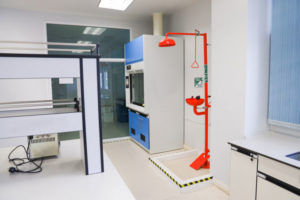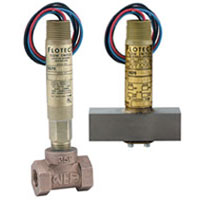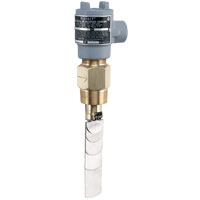 If you work with hazardous substances in your job, one of the first things you probably learned besides “Where’s the bathroom?” and “Where is my workstation?” is the location of the emergency safety shower and eyewash station. These emergency areas are vital to keeping workplace injuries to a minimum in laboratories and other hazardous areas.
If you work with hazardous substances in your job, one of the first things you probably learned besides “Where’s the bathroom?” and “Where is my workstation?” is the location of the emergency safety shower and eyewash station. These emergency areas are vital to keeping workplace injuries to a minimum in laboratories and other hazardous areas.
An emergency safety shower uses water to rinse away hazardous substances that might have gotten onto someone’s head or body. The water pressure of the shower is often too strong to be used for washing out the eyes, which is why an eyewash station is also necessary. (Wikipedia)

Dwyer’s Series V4 Flotect® vane operated flow switch and Series V6 Flotect® mini-size flow switches are the industry standard for emergency safety shower and eyewash station applications. These flow switches are installed on the inlet water line of the devices and provide indication to a control system that the safety shower has been activated, which can then signal an alarm.

Time tested in thousands of installations around the world, these products are weatherproof for either indoor or outdoor use, meeting NEMA 4 and explosion-proof ratings. Visit our website for product specifications.
Both OSHA (Occupational Safety and Health Administration) and ANSI (American National Standards Institute) provide detailed standards and recommendations pertaining to emergency safety showers and eyewash stations:
OSHA’s 29 CFR 1910.151(c) states that, “Where the eyes or body of any person may be exposed to injurious corrosive materials, suitable facilities for quick drenching or flushing of the eyes and body shall be provided within the work area for immediate emergency use.”
The ANSI Z358.1-2014 standard recommendations are more specific in regard to station capabilities, detailing the flow requirement for safety showers as “a minimum of 20 [gallons per minute] at 30 [pounds per square inch],” the flow requirement for eyewash stations as “a minimum of 0.4 gpm at 30 psi,” and combination eye/facewash required flow as “a minimum of 3.0 gpm at 30 psi.” The standard also states that all emergency station outputs should provide an uninterrupted flow of tepid water for at least 15 minutes, even when the shower and eye/facewash in a combination station are activated simultaneously. (Safety and Health Magazine)
 If the shower or eyewash station do not meet these minimum requirements, they may not use enough water to wash away hazardous contaminants. On the other hand, if the water pressure is too high, they may not be comfortable or safe for sensitive areas such as the eyes and face.
If the shower or eyewash station do not meet these minimum requirements, they may not use enough water to wash away hazardous contaminants. On the other hand, if the water pressure is too high, they may not be comfortable or safe for sensitive areas such as the eyes and face.
When it’s critical, it has to be Dwyer.
Dwyer® products are used in many critical applications around the globe, in many different industries. From building control to medical applications, Dwyer® products play a vital role in keeping people safe.
If you have any questions about selecting products for your application, the Dwyer Applications Engineers are available to assist by phone at (219) 879-8868 x6402, or by email at tech@dwyermail.com.

